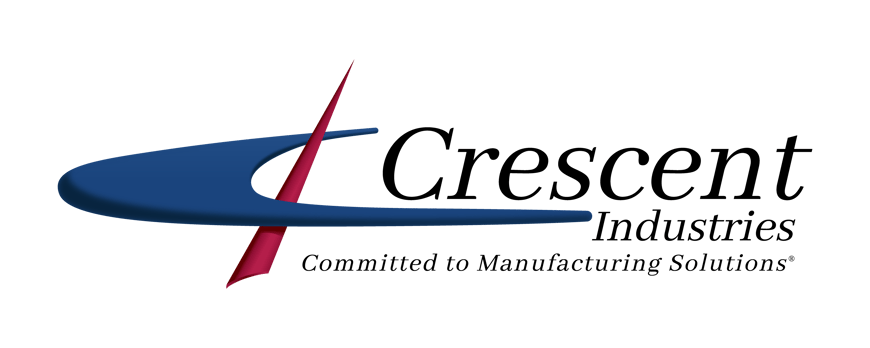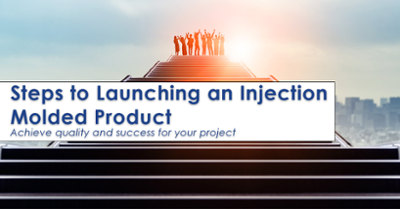
3 Reasons Why Product Launches are Late
(updated Oct 13, 2022)
Launching a new plastic product or device is an exciting time for OEMs but it also presents some challenges. There is often a tight budget and a strict schedule to adhere to to meet the product launch targets – and the launch is critical to the success of the product. No matter what your injection molding product is, the reasons for a delayed launch are often the same. Below are three of the main reasons why product launches are late – and some ideas to minimize the risk associated with each in order to set your product on a track to success!
1. Communication Breakdowns
Collaborative communication is the key to a successful project or product launch – but, unfortunately, communication breakdowns are often responsible for late product launches.
There are three key parties involved in an injection molding project: the OEM, the molder, and the tool shop. OEMs have the choice between partnering with a single vendor, or multiple vendors, to accomplish their tool building and parts production. When partnering with a single-source provider, such as Crescent, OEMs receive a complete manufacturing solution, providing value by minimizing the number of vendors involved – resulting in improved communications and faster speed-to-market. A single-source partner guides OEMs through the design, engineering, product development, and production stages smoothly and quickly – resulting in a more seamless product launch.
There should always be a single point of contact at each organization to ensure clear communication and alignment. Additionally, some key details must be communicated clearly during the planning phase to ensure an on-schedule launch. First, project timeline. This may seem obvious but it is amazing how often schedule misalignment occurs between an OEM and their molding and tooling vendors. Second, avoid assumptions! OEMs need to communicate critical dimensions, tolerances, and features – and whether each of these is negotiable. This information will aid the supplier when it comes to optimizing the product design to fabricate a less costly mold and facilitate easier manufacturing.
2. Supplier Capabilities Exceeded
OEMs should take the time to research and get to know their manufacturing supplier. OEMs need to be aware of the capacity of their manufacturing partner and not “over source”. Every supplier has a capacity and it doesn’t matter how good a supplier is – if their capacity is exceeded, the new product launch is at risk and will likely be late!
Additionally, every partner has its strengths and weaknesses. When it comes to a new product launch, OEMs should tap into their partner’s strengths for a more successful launch, and, of course, stay clear of the weaknesses. A good supplier adds value by going above and beyond to share expertise and offer optimizations to ensure a successful product launch! OEMs need to choose their manufacturing partner wisely as a supplier can either be a huge asset, or a huge hindrance, towards a timely product launch.
3. You Get What You Pay For!
When it comes to manufacturing, there are 3 main drivers for OEMs: cost, schedule, and quality. Suppliers can generally offer 2 of the 3. The adage “you get what you pay for” rings true for new product launches too! OEMs should partner with a supplier that produces quality parts at a reasonable cost and timeframe – and avoid a late product launch due to schedule delays or poor product quality because they selected the cheapest option!
To improve the likelihood of an on-time product launch, it is crucial for OEMs to partner with an injection molder, such as Crescent, who has Design for Manufacturability (DFM) expertise; this means the tool design and manufacturing teams are integrated to allow manufacturability and quality issues to be identified and addressed during the design process instead of after the tool is fabricated – saving OEMs significant product development time and cost!
Additionally, OEMs need to spend the time and money to adequately perform quality testing to confirm the safety and functionality of the final product – this is not an area to skimp on! OEMs should have a firm understanding of their supplier’s quality program as this is an area where excellent injection molders stand out from their competition.
Crescent Industries
Crescent Industries is an employee-owned custom injection molder providing an integrated single source solution for your custom plastic injection molded components utilizing our advanced engineering capabilities. Our capabilities allow us to mold a comprehensive range of engineered and commodity grade resins. Crescent currently serves the medical, pharmaceutical, dental, defense, safety, electrical/electronic, aerospace, and OEM/Industrial markets.
Crescent Industries has an extremely knowledgeable team that helped to create this on-demand webinar as a resource for you.
Watch this webinar, and start your project off right.
Topics:
Related Articles
-
Feb 27, 2024
How To Find a Reputable Plastic Injection Molding Company
Read MoreThere's a lot to consider when searching for the right plastic injection molding company to...
-
Sep 06, 2023
What is Plastic Injection Mold Tooling?
Read MoreInjection mold design gives you the ability to create parts with ease. You fill a mold designed to...
-
Apr 18, 2023
Why Should you Outsource Custom Injection Molding?
Read MoreBringing a product from design to market is challenging. The job gets even more demanding when the...

